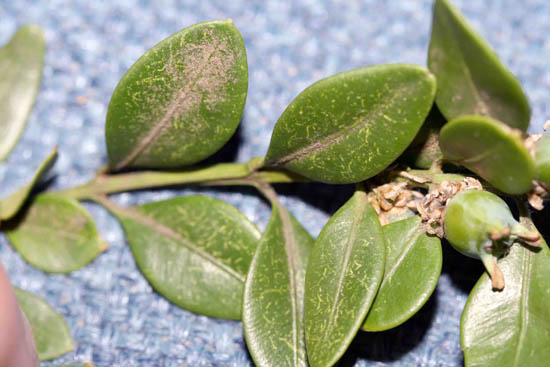Issue 7, June 5, 2009
Boxwood Spidermite
We are also seeing some damage caused by boxwood spidermite, Eurytetracnychus buxi. Initial damage appears as light green squiggles across the leaf upperside. The mites feed on both sides of the leaf and look similar to other spidermites except that they are slightly reddish and have elongated front legs. Their round, yellow-green eggs are also relatively obvious on the leaf underside as they are almost as large as the adult mites. Eggs overwinter on the leaves and hatch in the spring. They have eight or more generations through the year, but damage tends to be heavier in spring and early summer.
As the infestation grows, both leaf surfaces will become covered with brown stippling feeding damage. Severely damaged leaves will drop off of the plant. At this time, we are seeing only the early signs of feeding and have not seen eggs or active stages of the mite. Spidermites are susceptible to fungi that specialize on attacking mites. These fungi do better under the cool, damp conditions that are also helping their plant-attacking fungal relatives be a problem to various landscape plants. As the early summer progresses and it becomes hotter and drier, keep an eye out for increased mite populations that will require control.

These mites are controlled with the same miticides used for other spidermites. These include abamectin (Avid), acequinocyl (Shuttle), bifenthrin (Talstar, Onyx), etoxazole (TetraSan), insecticidal soap, spiromesifen (Forbid), and summer spray oil. Particularly with the short-lived insecticidal soap and summer spray oil, plan on two applications 7-10 days apart.--Phil Nixon
Author:
Phil Nixon